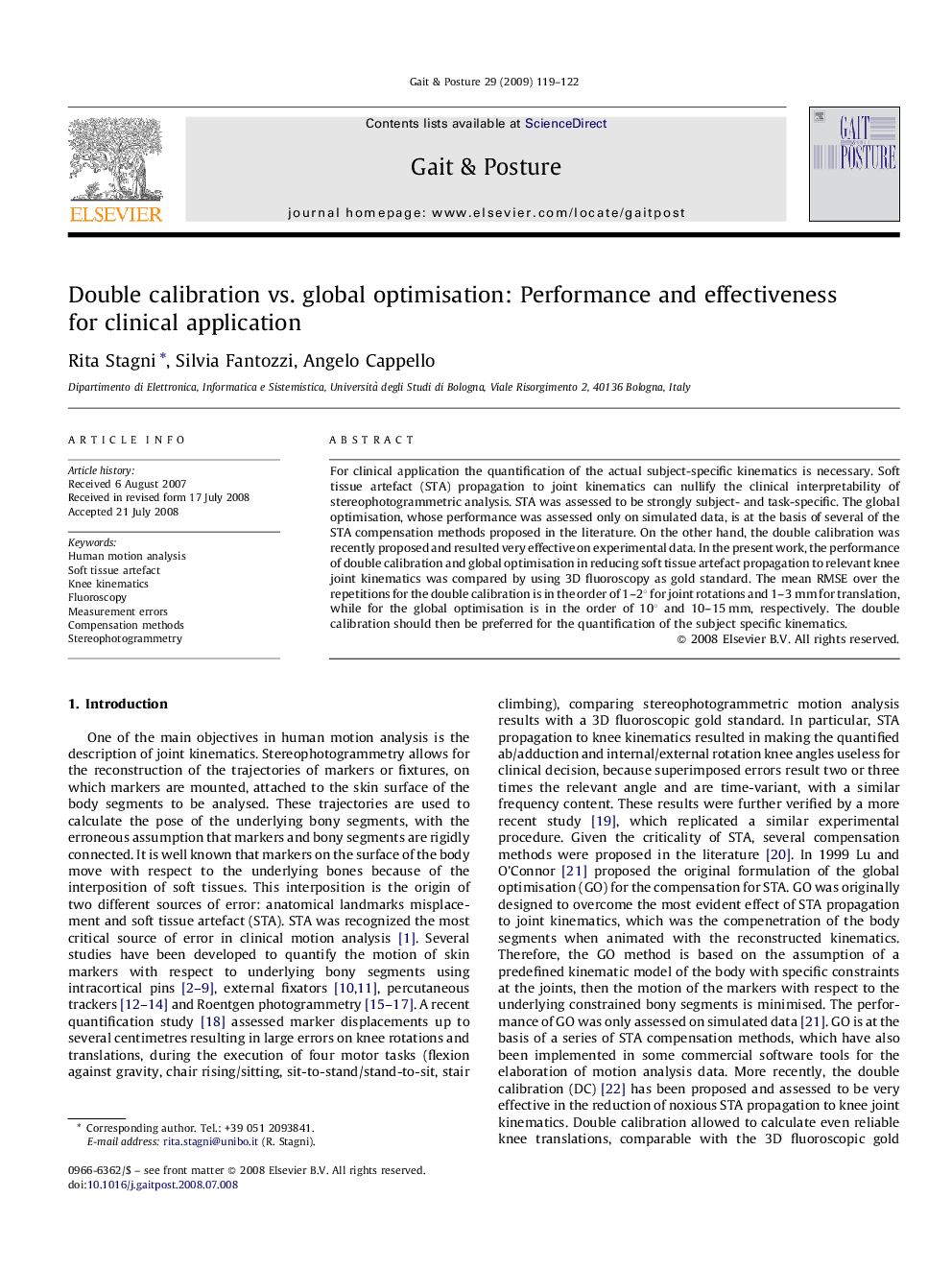| Article ID | Journal | Published Year | Pages | File Type |
|---|---|---|---|---|
| 4057966 | Gait & Posture | 2009 | 4 Pages |
For clinical application the quantification of the actual subject-specific kinematics is necessary. Soft tissue artefact (STA) propagation to joint kinematics can nullify the clinical interpretability of stereophotogrammetric analysis. STA was assessed to be strongly subject- and task-specific. The global optimisation, whose performance was assessed only on simulated data, is at the basis of several of the STA compensation methods proposed in the literature. On the other hand, the double calibration was recently proposed and resulted very effective on experimental data. In the present work, the performance of double calibration and global optimisation in reducing soft tissue artefact propagation to relevant knee joint kinematics was compared by using 3D fluoroscopy as gold standard. The mean RMSE over the repetitions for the double calibration is in the order of 1–2° for joint rotations and 1–3 mm for translation, while for the global optimisation is in the order of 10° and 10–15 mm, respectively. The double calibration should then be preferred for the quantification of the subject specific kinematics.
